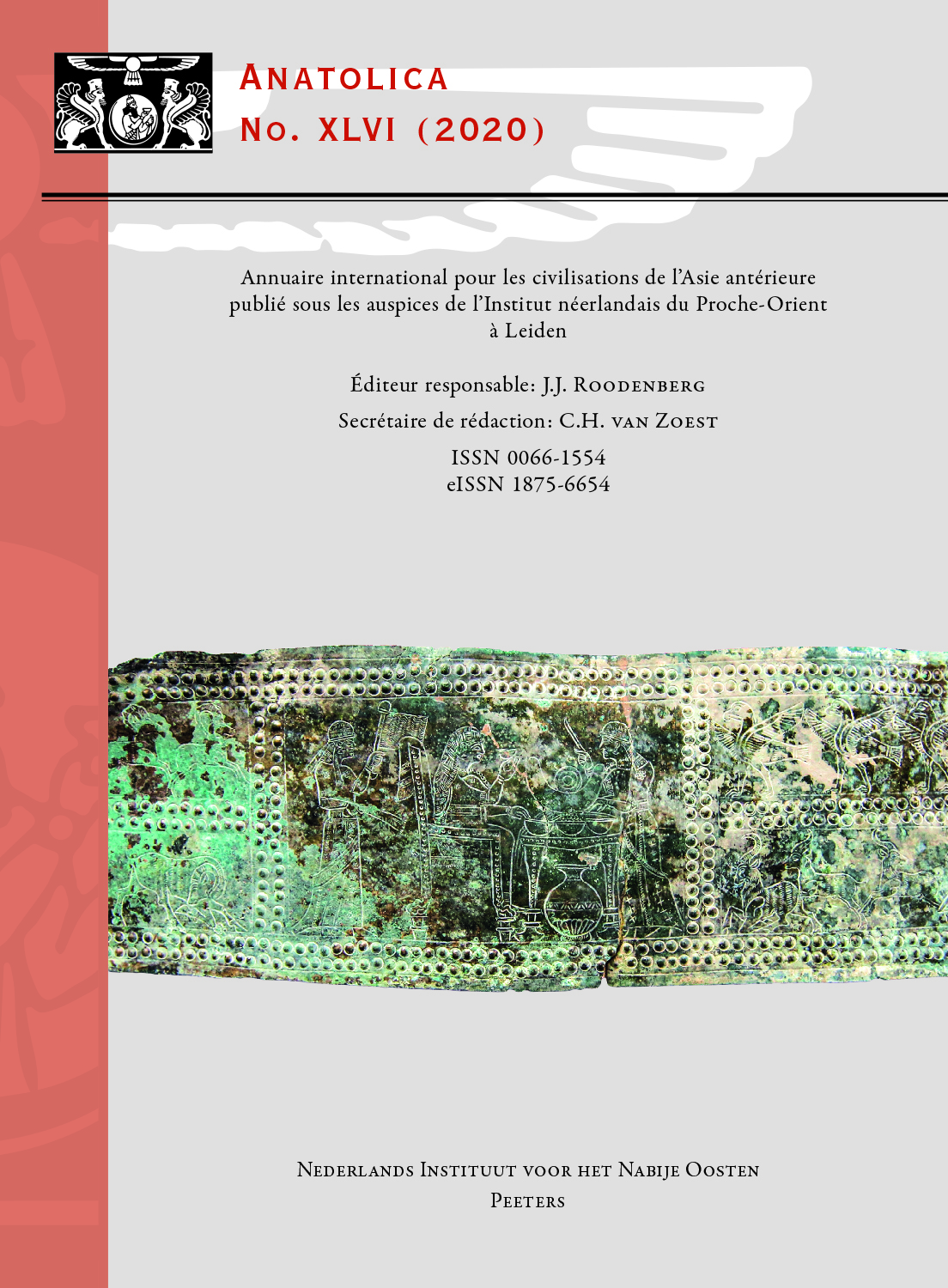 previous article in this issue previous article in this issue | next article in this issue  |

Preview first page |
Document Details : Title: The Konya Regional Archaeological Survey Project Subtitle: The 2017 and 2018 Field Seasons Author(s): MASSA, Michele , BACHHUBER, Christoph , ŞAHIN, Fatma , BOSTANCI-KOLANKAYA, Neyir , TUNA, Yusuf Journal: Anatolica Volume: 45 Date: 2019 Pages: 159-180 DOI: 10.2143/ANA.45.0.3287005 Abstract : The Konya Regional Archaeological Survey Project (KRASP) is an interdisciplinary, multi-scale research programme in south-central Turkey. KRASP aims at integrating new fieldwork with the substantial research corpus already available for the region, in order to provide a synthetic understanding of archaeological and palaeoenvironmental dynamics in the plain and surrounding highlands. This includes a diachronic assessment of human-environment interactions in different ecological niches, of sedentism, urbanism and political consolidation, and of related phenomena such as modifications to landscapes, farming production, and pastoral mobility. KRASP’s fieldwork focuses on three discrete ecological zones: the cultivated alluvium, the steppe margin, and the highland margin. This paper presents the methodologies, aims and preliminary results of KRASP’s 2017 and 2018 fieldwork seasons in the eastern section of the Konya Plain. Among the most significant results, our team uncovered evidence in the steppe for numerous temporary sites contemporary with Boncuklu Höyük and Çatalhöyük pre-XII, which provide a broader context to understand the process of Neolithisation of the region. It also dated the appearance of the first large centres (ca. 20 ha) in the region at the Chalcolithic-Early Bronze Age transition, and revealed the existence of a territorial defence system around the plain already in the early 2nd millennium BCE. Lastly, KRASP has identified a horizon of expanding sedentary sites (höyük) into the steppe during the late 2nd and early 1st millennia BCE, probably associated with a substantial irrigation project and possibly prompted by the rise of a large urban centre in the Çarşamba delta. |
 |


